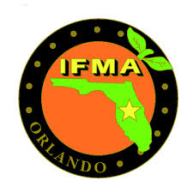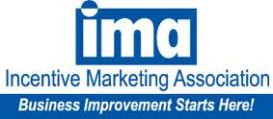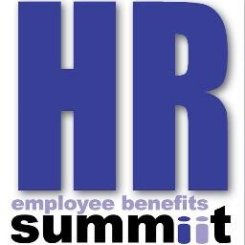1. “LED Lights That Transmit Data? Who Are You trying To Kid?“
To be presented by David Lawrence Dunn , CFM, Division Manager, Fleet & Facilities Management Division, City of Orlando.
 Overview: How many times have you gotten that call to “please give some time to this vendor” and you have immediately thought “well here’s another hour of my time I will never get back”. This was how the City of Orlando Fleet & Facilities Management Division Manager and Energy Project Manager were introduced to this product.
Overview: How many times have you gotten that call to “please give some time to this vendor” and you have immediately thought “well here’s another hour of my time I will never get back”. This was how the City of Orlando Fleet & Facilities Management Division Manager and Energy Project Manager were introduced to this product.
In February 2013 the Division Manager and Energy Project Manager spent an hour with the vendor personnel only to discover that what they described in LED and Visible Light Communication sounded too futuristic and fantastic to be true.
The City invited the vendor to prove their described technology and they did it!
The wild ride since then has challenged the vendor to refine their technology and deploy it into a fully functioning system in one of the City’s training rooms.August 12, 2013 the vendor exceeded the City’s expectations with their delivery!
This produced the first technology installation of this magnitude; in the world!The vendor is moving their Corporate Headquarters to Orlando and opening a manufacturing operation to support the first order of the technology that is expected to be a one million fixture order.The Tech is not like anything seen to date and is not even available on the market yet. The City of Orlando is working with the vendor as their test bed of Tech to facilitate these products further R & D.The Orlando Chapter of IFMA has been introduced to the vendor through a Vendor Showcase opportunity facilitated by the presenter the interest in this very new tech is growing. Airports and High Security locations, including the Kennedy Space Center are anxiously awaiting this products debut on the market!
Presentation Outline
The presenter shall describe a case study of how a vendor meeting in February of 2013 developed into a collaborative effort between a vendor with a brand new and previously unheard of technology through a very rapid research and development curve to a completely installed and operational solution by August of 2013.Details about the growing pains, the technology challenges and the means and methods to overcome the internal TM, Permitting, Code and Sr. Management stumbling blocks and absolute roadblocks will be presented. The vendor’s challenges in supporting the R & D in Orlando from their Laboratory base in Minnesota and the schedule requirements of Orlando will be outlined with each solution hammered out in this collaborative effort. The specifics of how the audience of members can take these lessons learned and their new understanding of this emerging technology back to their base for consideration will be shared.
2. Utility Lighting Rebates and Incentives: Making them work for you!
To be presented by Carlos Alonso-Niemeyer, Director of Utility Incentives, Specialty Lighting Group Energy Services
Overview: Statistically, commercial buildings consume approximately 25% of all the electricity produced in the USA with 35% of that specifically consumed by lighting. As a direct result, over the last five years, most states and utilities have dramatically increased their efforts to capture energy savings within this market segment by offering extremely aggressive Energy Efficiency Incentive programs. These programs target all the aspects of your business where potential energy savings can be realized: Lighting, HVAC, Water, Refrigeration, and Gas to name a few. Lighting is the simplest of these in which to implement a efficiency program.
Why not take advantage of the utility financial incentives to improve the efficiency of your lighting system when they can only help drive an acceptable ROI (Return on Investment)? By doing so you will dramatically reduce your operational and maintenance costs, while also helping the environment.
Note, that with the continuing advancement of technology within the lighting industry, funding for these programs will only increase during the next 4 years. At the same time, however, the older technologies will begin to drop from the list of available targets for these incentives. Now is the time to take action.
Meet with Specialty Lighting Group Energy Services to learn how these programs work nationwide:
– Access to funding available per state and utility area
– Overview of different types of Lighting Rebate and Incentive from utilities
– Application process at a corporate level
– Assessment and estimates for potential savings on corporate portfolios
– ROI analysis and additional benefits from energy efficiency projects
3. Leveraging the Power of Story for Meaningful Change: Storytelling for Influence
To be presented by: James Scott Brew, FCSI, AIA, LEED AP is a Director & Chief Building Scientist at Ebert & Baumann, a firm inspired by German quality—American Innovation.
Overview: If you have ever struggled to convince your clients to achieve a greater level of sustainability, this session is for you. Facility managers, architects, engineers, and product manufacturer’s often attempt to “make the case” for more aggressive sustainability or energy performance. However, while there is great opportunity for better buildings, it is often difficult to convince your audience to make the necessary commitment.
This interactive presentation will cover the powerful storytelling tools for sustainable design and present a practice case study for effectively using stories on green building projects. Key components of story structuring and order of magnitude estimates will be highlighted.
Learning Objectives:
- Identify the most common story structure and recognize it in practice.
- Know the basic elements of constructing a story and be able to write a storyline for any project.
- Be able to think through the process of crafting, refining and delivering a story.
Powered by
The Facilities Management Summit
December 3rd and 4th
Orlando, FL


















